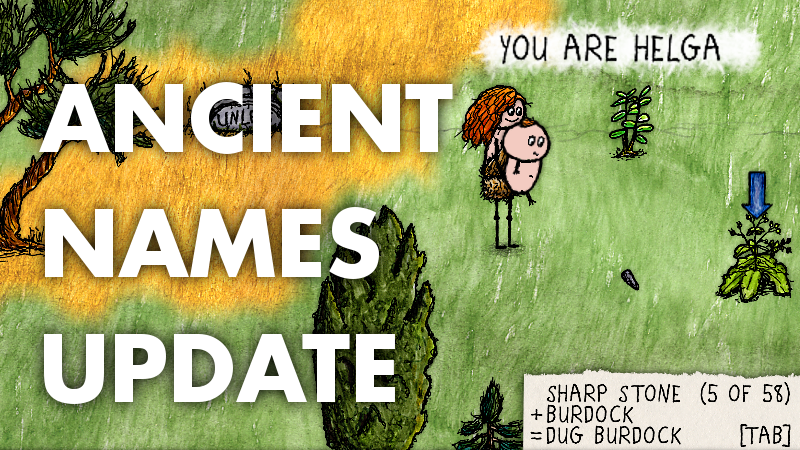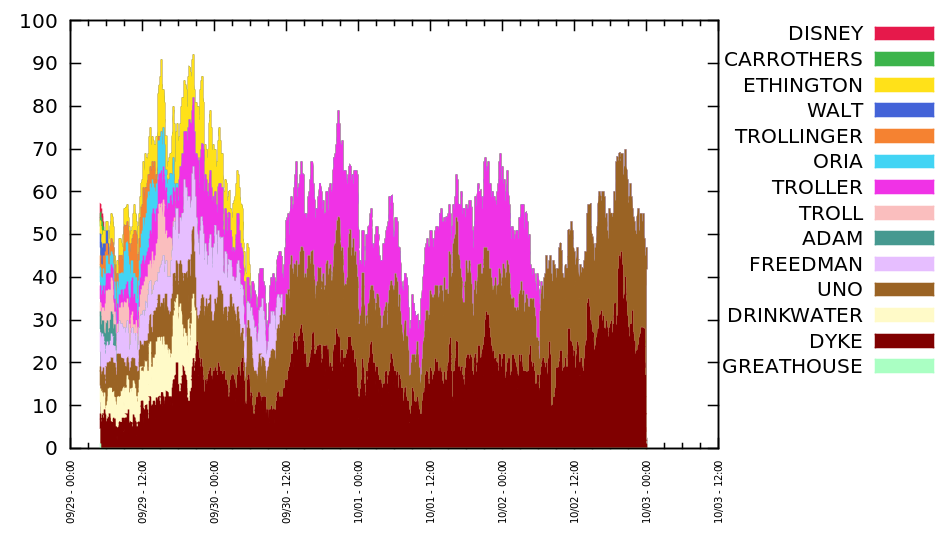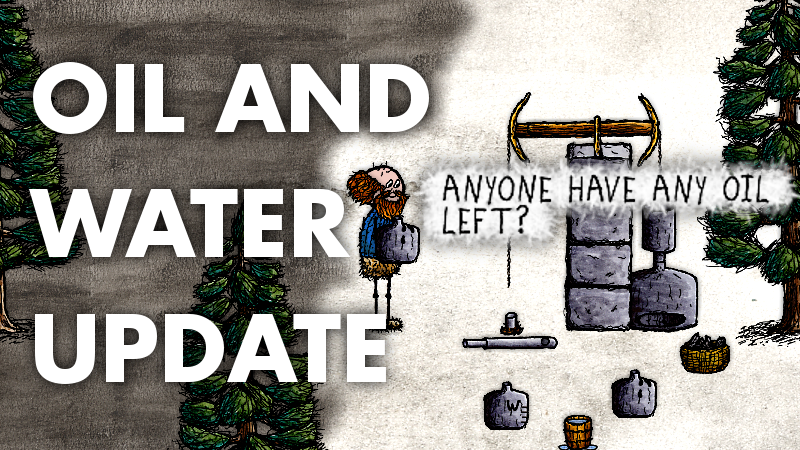
First of all, if you live in the Denver area, I'm speaking this Saturday at the Whaaat festival held at CU Bolder. More info here: http://www.whaaat.io
When baby naming was added to the game 18 months ago, there were 86,000 possible last names and 30,000 possible first names. That's a lot of names. The last names were taken from the US Census 2000 and included all names that occurred at least 200 times. The first names were taken from the Social Security database for the year 2016, and included all first names that occurred at least 5 times.
Taking a closer look at the source data, I noticed that far more names were available. I must have picked the 200+ cut off for last names myself, because the source data went all the way down names that occurred only 100 times. I suppose I was trying to cut down the data size, but now I realize that there's no reason to do this, thanks to the logarithmic time complexity of the name matching algorithm. Adding these extra last names almost doubles the size of the name pool, taking us up to 151,671 last names, and adding gems like Bodnarchuk, Gathof, and Shcnitkey.
For the first names, the list from 2016 only includes babies born in 2016---in other words, modern baby names. Turns out that many widely-known antique names like Helga aren't on that list. Furthermore, the available data is insanely comprehensive, covering all birth years going back to 1880. Might as well merge all these lists, to get a mega-list of all baby names that were ever used in the past 138 years. And wow, all the names are tagged with the gender of the baby. We can do something with that too. No more girls named Robert or boys names Sally.
Yes, there are some unisex names, but we can easily tease them out of the mix. Each name is accompanied by an exact occurrence count for each gender in each year. If a name is more balanced than 80/20 in any year, we call it unisex. It's also interesting that the gender associated with certain names shifted over the past century. Charlie was exclusively male early on, but now it's more female than male.
The result is 7917 unisex names, 32,074 exclusively male names, and 58,411 exclusively female names. Why are there nearly twice as many female as male names? People apparently exercise more creativity when naming their girls. This was true to some extent even back in 1900, when there were 1500 male names and 2200 female names. But it's clear that baby name creativity has blown up for both genders since then, with 18,000 female names and 14,000 male names in 2017---we've gotten almost 10x more creative, or maybe just more diverse, in the past 100 years.
Anyway, these changes mean that there's a lot more first and last name variety available (welcome to the party, Helga), and also that your baby's name will auto-match to the closest available name for their gender, including unisex names.
There's also a small improvement to immersion, as your mother's naming speech will be auto-filled with your actual name. YOU ARE ROBEFJLSKDF might auto-correct to YOU ARE ROBERT, for example. The same is true if the name your mother tried to give you is already taken. If Lucy is taken currently, YOU ARE LUCY might auto-correct to YOU ARE LUCILE. So you don't need to mouse over yourself after naming to find out your actual name.
The other big thing is an improvement to the hint system. When actively tabbing through or filtering the hints, a helpful bouncing arrow highlights the closest target object in the world. No more mousing over a bunch of stuff when trying to figure out what a flint chip looks like. There have been many requests for visual crafting hints, but there are problems with auto-scaling huge objects (like the rubber tree) in an aesthetically appealing way. Visual crafting hints would mainly help you find the object that you're looking for, and this bouncing arrow may solve that problem even more thoroughly.
The arrows can also be leveraged by expert players who are searching far and wide for a rare object. Tab to a hint that requires a tarry spot, and then roam. It will be impossible to miss any tarry spot that passes by on your screen. Since these arrows are only activated when you're actively tabbing or filtering the hints, they'll be invisible during regular, moment-to-moment play.
And bugs have been fixed, including one last cause of grave duplication and spurious (!) off screen sound notifications (sorry for making you paranoid last week, folks).
And what about the changes made last week? Did they work to extend arc longevityl? We just had a record-setting arc, lasting 4+ days after the Eve window closed, as can be seen in this family population graph:

We're getting close!







